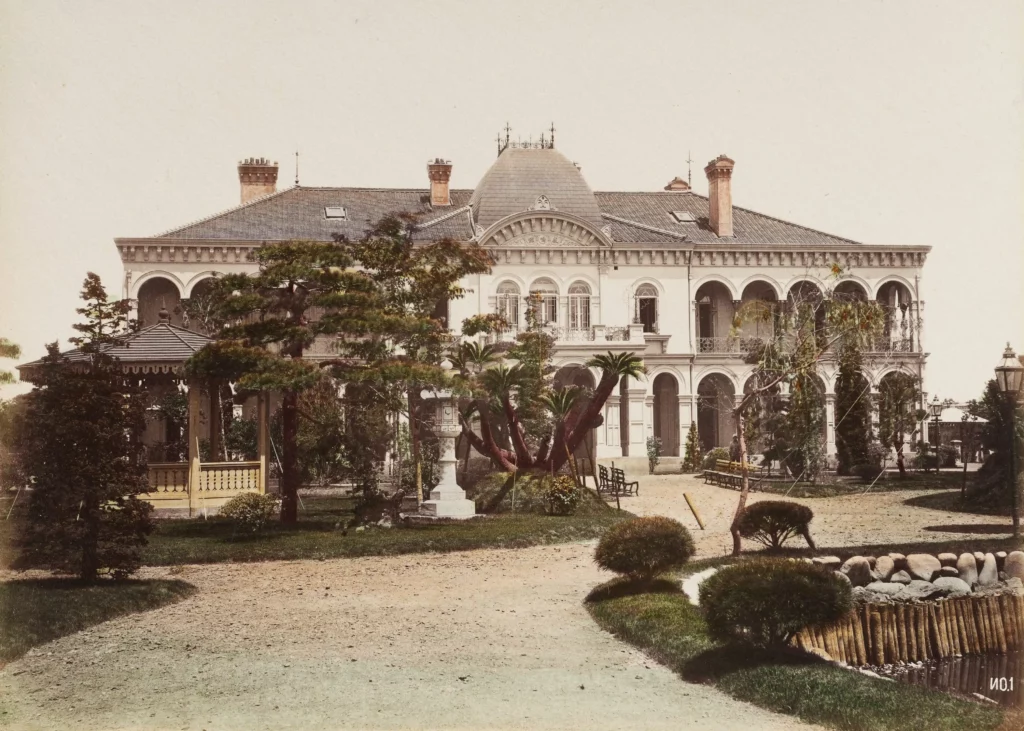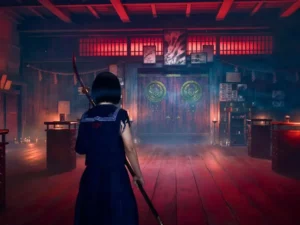Discover famous buildings in Japan, from the Rokumeikan to the Ryounkaku Tower. Experience the rich heritage and architectural wonders of Japan’s past in these historic landmarks! Let’s take a look at five famous buildings!
Table of Contents
ToggleRokumeikan (Tokyo)
In 1883, British architect Josiah Conder completed the Rokumeikan. It was a building that showcased Japan’s welcoming of Western culture during the Meiji period and impressed Western diplomats. However, the building’s Western-style without Japanese elements caused widespread dislike in Japanese society. Despite its fame for hosting parties, the Rokumeikan failed to bridge the gap between Japan and the West.

After its brief period of popularity from 1883 to 1887, the Rokumeikan served various purposes. It was initially a club for nobility and later as offices for a military insurance company. It was finally demolished in 1940, with only fragments such as a staircase and wallpaper preserved at the University of Tokyo and a chandelier housed in a temple. Today, a plaque marks the site of the Rokumeikan, and its once legendary status is almost gone in modern Tokyo.
Ryounkaku Tower (Tokyo)
Ryōunkaku, Japan’s first Western-style skyscraper, was built in 1890 in Tokyo’s Asakusa district. Designed by W.K. Burton, it stood twelve stories tall and looked like a lighthouse with red bricks and an octagon shape. Its name, “Cloud-Surpassing Tower,” came from its height, emphasizing its landmark status. The tower’s design allowed people to go up high in the sky, with kites often flying behind it in illustrations.

The Ryōunkaku Tower was also built for entertainment and fun, featuring stores selling global goods on its lower floors, with exhibition spaces and an observation deck on the upper levels. Moreover, visitors could shop, explore exhibitions, and enjoy city views, all in the same building. Equipped with electric elevators, the tower quickly became a symbol of Asakusa. Sadly, it was destroyed in 1923 by the Great Kanto earthquake, but its legacy remains popular.
Are you looking for some fantastic snacks while visiting historical sites? Check out Sakuraco! Sakuraco delivers traditional Japanese snacks, teas, sweets, and snacks from Japan to your door every month so that you can enjoy Japan’s taste anywhere!
Tottori Castle Ruins (Tottori)
Tottori Castle, initially constructed in 1532, served as an important stronghold during the Sengoku Period and later came under the ownership of the Ikeda Clan during the Edo Period. Today, all that remains of the castle are its stone walls and a single wooden gate. However, the castle has become a popular destination for cherry blossom viewing, with hundreds of cherry trees growing along the stone walls.

The castle was important during the 1581 siege, lasting an impressive 200 days, led by Toyotomi Hideyoshi against the castle’s Daimyo, Tsuneie Kikkawa. Tottori Castle used the natural landscape for defense, with its moat formed by a river and its structures built into the slopes of Kumatsu Mountain. Today, visitors can still hike to the top for views of Tottori City, the Sea of Japan, and the dunes, making the ruins a must-see for everyone!
Former Kaichi School (Nagano)
The Former Kaichi School Building, opened in 1873, symbolizes Japan’s early steps into modern education. It became a National Treasure in 2019 for its original architectural style, blending Western influences with Japanese design. It symbolized Japan’s move towards Western education methods during the Meiji Restoration. The school’s construction changed from a traditional temple design to a new Western style.

The school taught over a thousand students, introducing subjects like English and science alongside traditional studies. Changing from an elementary school to a museum in 1963, the Former Kaichi School now houses Japan’s top collection of educational items, from nineteenth-century textbooks to contemporary classroom equipment. Despite its transformation, the Former Kaichi School remains a symbol of education and cultural change in Japan.
Fujiya Hotel (Hakone)
In 1878, in Hakone, Fujiya Hotel was Japan’s first genuine resort hotel. Sennosuke Yamaguchi founded the hotel initially catered only to international visitors, offering Western-style accommodations and services. Despite challenges like the Great Miyanoshita Fire and the Great Kanto Earthquake, the hotel continued to operate. Fujiya Hotel recently had renovations to improve safety and preserve its historic legacy and reopened in July 2020.

Fujiya Hotel blends traditional Japanese hospitality with Western comforts. From its creation in the Meiji period to its recent renovations in the Reiwa era, the hotel maintains its commitment to exceptional service. Fujiya Hotel continues to attract visitors worldwide, offering a blend of history, luxury, and comfort. Whether exploring the hotel’s rich history or enjoying its modern services, guests can experience the best of both worlds at this iconic Japanese hotel!
From the historic Tottori Castle Ruins to the modern elegance of Fujiya Hotel, these famous buildings show Japan’s rich history, inviting visitors to explore the country’s past. Whether learning about ancient fortresses or enjoying yourself in modern comforts, Japan’s famous buildings promise an unforgettable journey through history and innovation. Have you ever visited any of these buildings? Did you know about their existence? Let us know in the comments below!










